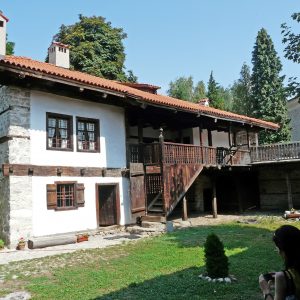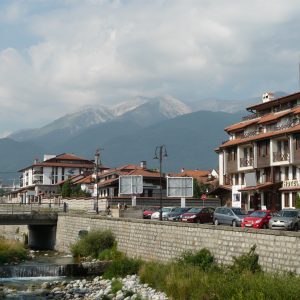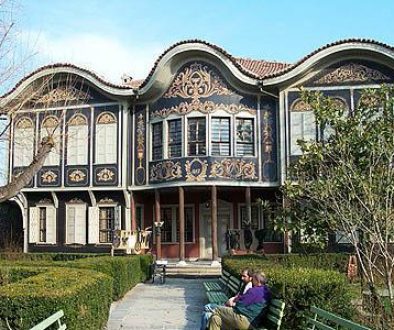Bansko
 According to many legends and local tales, some of which claim historical credibility, the founding of Bansko can be traced back to a time following the period of Ottoman invasion (15th-16th century) It is from this time that Bansko is mentioned as a centralized settlement in an official document (an Ottoman register of 1576). Prior to that time the population inhabited several separate small hamlets. The lack of any data on the development of the region in earlier times was to some extent filled by archaeological excavation and research. Findings were diverse and encompass all historic periods from prehistory to antiquity to the Middle Ages. During the bleak years of Ottoman rule, Bansko became a stronghold of Bulgarian spirit. The settlement enjoyed a status of limited autonomy within the Ottoman Empire.
According to many legends and local tales, some of which claim historical credibility, the founding of Bansko can be traced back to a time following the period of Ottoman invasion (15th-16th century) It is from this time that Bansko is mentioned as a centralized settlement in an official document (an Ottoman register of 1576). Prior to that time the population inhabited several separate small hamlets. The lack of any data on the development of the region in earlier times was to some extent filled by archaeological excavation and research. Findings were diverse and encompass all historic periods from prehistory to antiquity to the Middle Ages. During the bleak years of Ottoman rule, Bansko became a stronghold of Bulgarian spirit. The settlement enjoyed a status of limited autonomy within the Ottoman Empire.
 The entrepreneurial spirit of Bansko residents and their striving for innovation were the foundation for the unbelievable economic and spiritual upsurge in the town around the end of the 17th and beginning of 18th century. A wealthy class of craftsmen and merchants emerged; they carried goods with caravans from the Aegean to Central and Western Europe, some of them opened their own offices there.
The entrepreneurial spirit of Bansko residents and their striving for innovation were the foundation for the unbelievable economic and spiritual upsurge in the town around the end of the 17th and beginning of 18th century. A wealthy class of craftsmen and merchants emerged; they carried goods with caravans from the Aegean to Central and Western Europe, some of them opened their own offices there.
In 1896 the town became the regional centre of VMORO (Internal Macedonian Odrin Revolutionary Organisation) and an important unit in the conspiratory committee network. Banskalii also had active participation in the notorious “Miss Stone” affair. The years between 1901 – 1903 were a time of decisive strengthening, unification and growth of the revolutionary process. The climax of this process was the Ilinden Uprising – the grandest demonstration of people’s decisiveness to break the chains of oppression in Macedonia.



